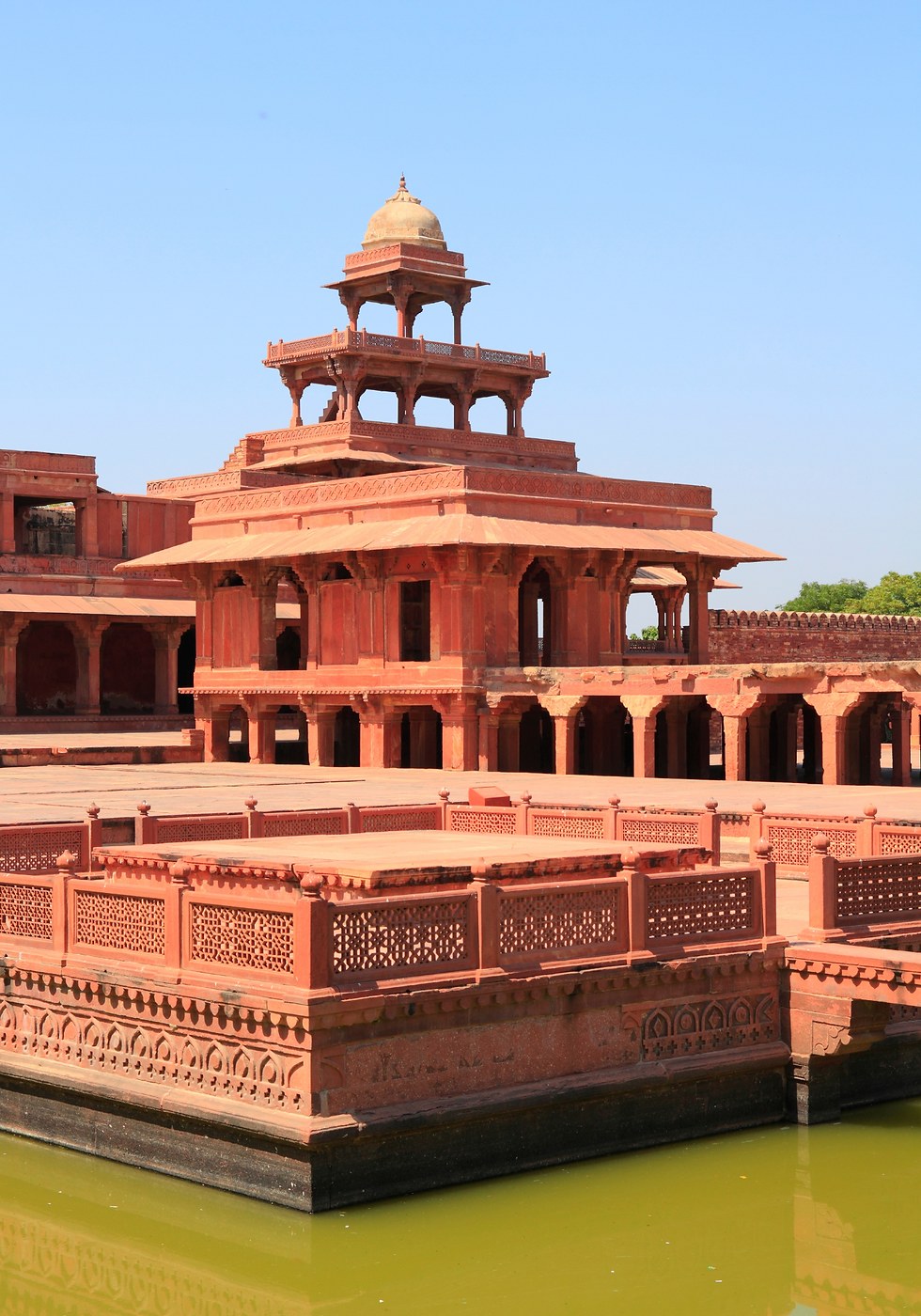What to see in Fatehpur Sikri, Agra (Bharat, India)
- Mia Caudet
- Dec 18, 2023
- 5 min read
Fatehpur Sikri is an abandoned town located in the Agra district of the state of Uttar Pradesh, a few kilometers from the center of Agra. This city was built by the Mughal emperor Akbar between 1571 and 1585 and was the capital of the empire for 14 years.
Without a doubt, it is one of the essential places to see in Agra. In this post I tell you a little about the history of Fatehpur Sikri and what to see in the abandoned city of Fatehpur Sikri.
A little history of Fatehpur sikri
The city was built as a palatial city just 20 kilometers from the center of Agra. The idea was that it would be the capital of the Mughal empire, although this only happened for 14 years. The lack of water was the main decision to leave the city.
Despite being abandoned, it was never destroyed. And much later, the city built of red sandstone became a very popular place to visit, and even more so, after it was declared a World Heritage Site by UNESCO in 1986.
WHAT TO SEE IN FATEHPUR SIKRI
Biland Darwaza, the imperial gate of the city of Fatehpur Sikri
Biland Darwaza is the main gate to the city of Fatehpur Sikri. It was built in 1601 to honor the victory over Gujarat. It is considered the tallest gate in the world at 54 meters high, including 42 steps leading to it. The monument is built in red and ocher sandstone and decorated with black and white marble. The door is symmetrical and surmounted by large chhatris.
On the door we can see an Islamic inscription written in Persian with a prayer; Isa (Jesus), son of Mary said: “The world is a bridge, cross over it, but do not build any house on it. He who waits a day can wait for eternity, but the world only lasts an hour.”
Jodha Bai's Palace
Jodha Bai's Palace is a palace complex dating back to the 16th century. It is part of the Faterhup Sikri World Heritage Site. It is made up of a series of buildings, gardens and patios. It is divided into two areas; the public area and the private area. In the public area are the buildings where banquets were held, audience rooms and gardens. In the private area are the private quarters of Jodha Bai and her companions.
Panch Mahal
The 5-story Palace, the Panch Mahal, is one of the places you will visit on the Fatehpur Sikri tour. Its construction dates back to the 18th century, composed of five white marble towers, all of them connected by corridors and balconies. This palace complex is decorated with stone carvings with floral, animal and geometric motifs.
The Jama Masjid Mosque, one of the essential places to see in Fatehpur Sikri
The Jama Masjid Mosque of Fatehpur Sikri was built in the 16th century and is a UNESCO World Heritage Site. Without a doubt, it is one of the most essential places to see in Fatehpur Sikri.
The design of the mosque is inspired by several mosques that were commissioned by various pre-Mughal sultanates. In this impressive mosque we find the tomb of Salim Chishti, the saint for whom this mosque was built and to honor him.
The Tomb of Salim Chishti
The Tomb of Salim Chishti, located in the Jama Masjid mosque in Fatehpur Sikri, dates back to the 16th century. In fact, the mosque was built in his honor. The tomb is built in a Mughal style, in white marble and decorated with carved stone work depicting flowers, animals and geometric elements. The tomb is surrounded by a beautiful marble garden with a central fountain. The tomb is made up of three main rooms: the maqbara, the hazrat khana and the iwan. The maqbara is the funerary room where the sarcophagus of Salim Chishti is located.
The Palace of the Christian Wife
The Palace of the Christian Wife, also known as the Maryam-uz-zamari Palace, is a palace complex built in the 16th century in a Mughal style and declared a World Heritage Site by UNESCO. The Palace is made up of several buildings, pavilions, patios and gardens. It is also divided into two parts, the public area and the private area.
Hiran Minar
The Hiran Minar is a water tower that was built in the 16th century. It is within the abandoned city of Faterhup Sikri and is also part of the complex declared a World Heritage Site. This tower was built to provide drinking water to the city during the years it was in operation.
The tower is 54 meters high and is built of red sandstone. In it you can see delicate details of stone carvings with floral motifs, animals and geometric elements.
Pachisi's Courtyard
The Patio de Pachisi is a symmetrical square in the shape of a cross and is paved with red sandstone. In the center of the patio there is a pachisi board carved in stone. This board is surrounded by stone benches used to sit and play. It is said that Akbar was a fanatical pachisi player and played daily with his ministers and courtiers.
Birbal Palace, one of the essential places to see in Fatehpur Sikri
Within the abandoned city of Fatehpur Sikri, one of the essential palaces to see is the Birbal Palace. This palace, built in red sandstone, dates back to the 16th century and is part of the complex declared a World Heritage Site by UNESCO.
Like the other palaces in the city, the palace is also divided into two parts; the public area and the private area. It stands out for having beautiful stone carvings with floral and geometric motifs.
The abandoned city of Fatehpur Sikri has many more buildings, which you can visit, get lost among the red sandstone buildings and enjoy this wonderful place. To visit the entire site you will need around 3 or 4 hours. You can take a tour from the center of Agra:
POSTS FROM AGRA THAT MAY INTEREST YOU
PLAN YOUR TRIP STEP BY STEP
I hope you enjoy your trip to Bharat (India) and that this article has been useful to you. You can continue readingmany more related articles on the blog.
If you liked this article, subscribe to the blog so you don't miss out on upcoming destinations,curiosities, travel tips and inspiration for your trips.
A hug and see you soon!






















Comments